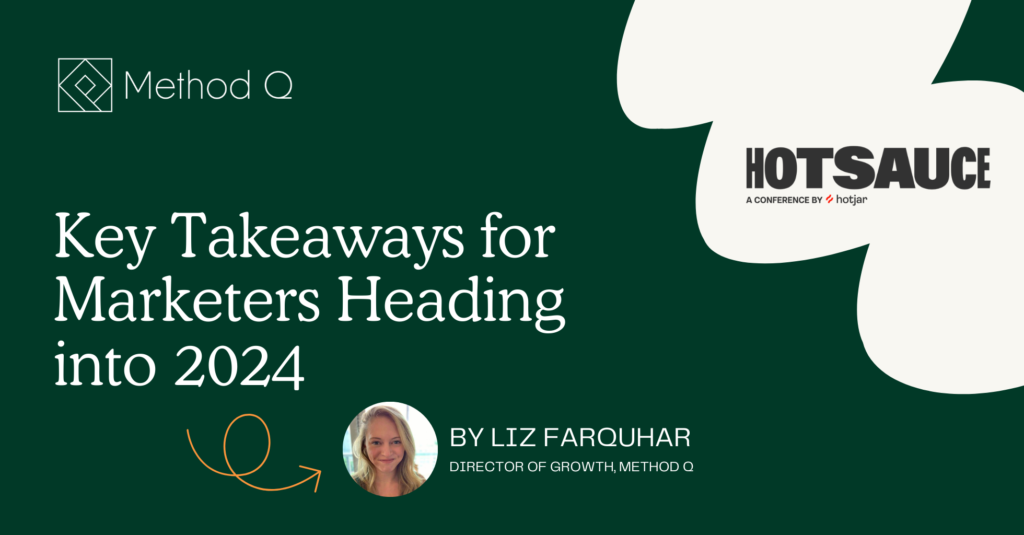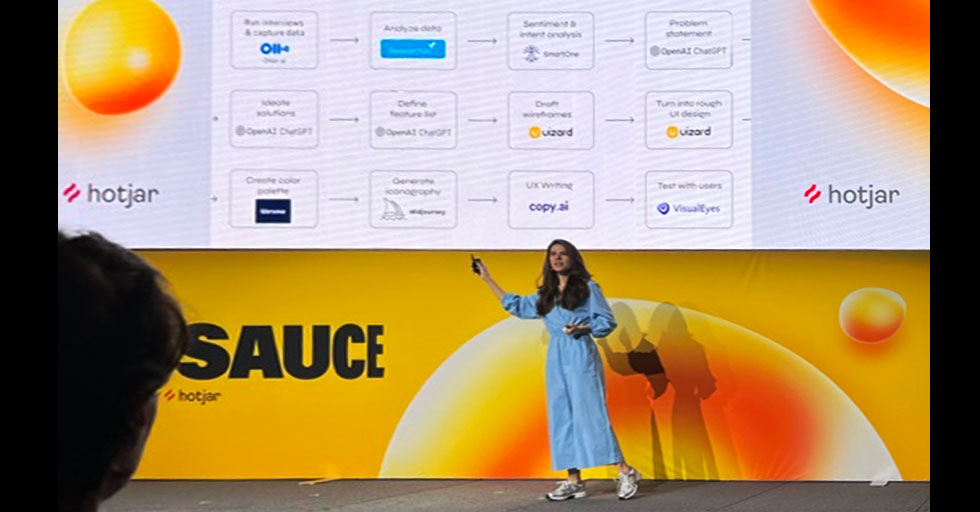
The Hotsauce Conference, hosted by Hotjar, brought together product experts and marketing thought leaders to discuss the latest trends, insights, and strategies in the ever-evolving world of design, marketing, and product development. From the many thought-provoking presentations, three key takeaways stood out as valuable lessons for marketers to take into 2024 strategic planning.
1. Infusing Empathy into Website Design
Keisha Mabry, the founder of Heydays, delivered a presentation on the importance of infusing empathy into website design. She started by making a relatable analogy: comparing bad websites to bad dates. Both are experiences that can leave a lasting negative impression, and both can be improved with empathy. Keisha shared three fundamental principles for creating empathetic websites:
Tell a Story
Websites should tell a compelling narrative. Stories engage users emotionally and help them connect with the content. Incorporating storytelling into web design can make a website more relatable and memorable.
Tell the Truth
Honesty is essential in web design. Transparency builds trust, and users appreciate authenticity. By being truthful about products, services, and information, websites can enhance their credibility.
Tell People What to Do
Clear and intuitive navigation is crucial. Users should easily find what they are looking for, from the homepage to the payment portal. A well-designed website guides users through their journey and ensures they take the desired actions.
Keisha’s Message was Clear
websites should aim to be good date websites, not dressed in the clothing of bad date websites. By infusing empathy, storytelling, and user-friendly design, websites can become more engaging and user-centric.
2. Crafting AI-Powered Experiences
AI was a major theme at the conference, which is no surprise given the explosive growth in this area.
Ioana Teleanu, Senior Product Designer at Miro, explored the challenges and opportunities in crafting AI-powered experiences. Ioana highlighted the rapid evolution of AI and emphasized that “revolutionizing basic stuff seems to be the hardest.” She presented a stark comparison, demonstrating how quickly ChatGPT reached 1 million users compared to other tech giants like Netflix, Facebook, and Instagram (days compared to months and years!)
Despite AI’s rapid growth, it faces various challenges:
a. Working out Bias
Ensuring AI systems are free from bias is a critical challenge. Designers must assess datasets for any bias during the development process to avoid baking that into any AI application.
b. Safety and Security
AI systems must be secure and safe for users. Protecting data and maintaining the privacy of individuals is paramount.
c. Designing for Probability
Unlike conventional design where paths are well-defined, AI design is probabilistic and unpredictable. Designers must accommodate non-deterministic and unexpected behavior.
d. Trust and Transparency
Users need to trust AI systems. Providing transparency in how AI systems operate and make decisions is essential.
Ioana also highlighted key design principles for AI applications:
- Start with People: Focus on the user’s needs and experiences.
- Build for Everyone: Ensure inclusivity and accessibility in AI design.
- Fight Bias: Eliminate bias and discrimination in AI systems.
- Be Accountable: Take responsibility for the impact of AI.
- Build Trust: Foster trust with users through transparent design.
- Give Safety and Control: Allow users to control their AI interactions.
- Promote Good: Design AI systems that contribute positively to society.
Ioana’s presentation reinforced that AI is transforming the user interface paradigm and urged designers to prioritize ethical considerations.
3. Audience-First Marketing is a Necessity
Rand Fishkin, a prominent figure in the marketing industry, presented a compelling case for adopting an audience-first approach in modern marketing. He emphasized that the traditional marketing strategies of the past 15 years are no longer as effective due to adtech upheaval, ad blocking, and data privacy regulations.
Rand advocated for a new marketing approach that focuses on the following key principles:
Market to the Sources of Influence
Identify the channels, communities, and influencers that resonate with your audience and market to those sources. Building relationships with influential figures and platforms can be more effective than traditional advertising.
Deliver the Right Message
Understand what your audience values, what problems you can solve for them, and why they would become fans of your business. Craft messages that align with your audience’s needs and desires.
Adapt to Zero-click Marketing
Coined by Amanda Natividad at SparkToro, zero-click marketing is a challenge that all marketers need to reckon with today. To keep users on their platforms, giants like Google, LinkedIn and Facebook, are increasingly engaging a “zero-click” approach in their content algorithms. Organic posts that include external links are getting a fraction of the reach and engagement of posts without any links. Rand pointed out two identical posts that SparkToro posted on Facebook. The post that did not include a link received 3-4x more reach than its linked counterpart. To improve performance with organic social, marketers need to test different post types to maximize reach and still find ways to drive traffic back to their website whenever possible.
Rand’s audience-first marketing strategy emphasizes the importance of building meaningful connections with your target audience through personalization and out-of-the-box thinking for modern marketing considerations.
4. Harnessing the Power of the Mind
Anh Vu-Lieberman’s session was one of the most powerful sessions I attended. Her session centered around human psychology and how it impacts marketing and business. It was hard to choose highlights from this session because she shared SO much great advice. Here are just a few ideas on what to test to improve conversion rates:
Free Shipping
If a user is close to the free shipping threshold (within $10) and shows intent to leave, offer to give them free shipping as an incentive to purchase.
Constantly Experiment
The things that you think will do well with audiences, may not always pan out as expected. Constantly test and iterate to find what does work with different users and markets. Through her work with one retailer, Anh Vu-Lieberman found that redheads didn’t perform as well as other models because users didn’t identify with them as much as natural blondes and brunettes.
Simple Tests Pay Off
Improving conversion rates can be as simple as adding a bold colored box on sales items. She helped another retailer achieved a 154% higher conversion rate and 260% more revenue from adding a hot pink box that said “Bundle and Save” to underperforming products.
Closing Notes
The Hotsauce Conference provided valuable insights into the rapidly changing worlds of design, marketing, and product development. The top takeaways from the event emphasize the importance of empathy in design, ethical considerations in AI, and an audience-first approach to marketing. As product designers and marketers continue to adapt to AI and other evolving trends, these key insights will serve as valuable guides for success in the years to come.




